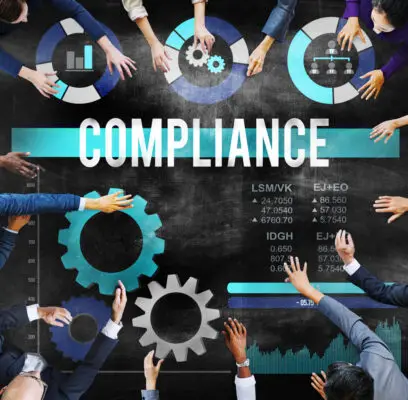Risk control self-assessment (RCSA) is a process that helps organizations identify, assess, and manage risks. It is an essential part of effective risk management and helps organizations ensure that they are compliant with relevant regulations and standards.
Implementing RCSA steps can be a complex process, but it is necessary for organizations that want to minimize risk and protect their assets.
The first step in implementing an effective RCSA process is to identify the risks that an organization faces. This involves a thorough analysis of the organization’s operations, including its business processes, systems, and people. Once risks have been identified, the next step is to assess them.
This involves evaluating the likelihood of each risk occurring and the potential impact it could have on the organization. Based on this assessment, organizations can then prioritize risks and develop strategies to manage them.
Implementing RCSA steps can be challenging, but it is essential for organizations that want to minimize risk and ensure compliance.

Identifying and assessing risks, organizations can develop strategies to manage them effectively, which can help protect their assets and reputation. With the right approach and tools, organizations can successfully implement an RCSA process and achieve their risk management objectives.
Understanding Risk Control Self-Assessment
Risk Control Self-Assessment (RCSA) is a process that helps organizations identify and evaluate operational risks and assess the effectiveness of their control measures.
It is a structured approach that involves identifying, assessing, mitigating, and monitoring risks across all levels of an organization. The RCSA process is used to identify and evaluate operational risks and gauge the effectiveness of the organization’s controls in managing those risks.
The RCSA process typically involves the following steps:
- Documentation and Definition: The first step in the process is to identify and define organizational units for the purpose of risk management. These units need to be structured in the form of a hierarchy. The end result of the exercise is that the risk entities are identified and the relationship between them is clearly defined.
- Identify Risks: The next step is to identify the risks associated with each of the defined entities. This is done by conducting a risk assessment exercise, which involves identifying potential risks and assessing the likelihood and impact of each risk.
- Assess Risks and Controls: Once the risks have been identified, the next step is to assess the effectiveness of the existing controls in managing those risks. This is done by conducting a control assessment exercise, which involves evaluating the adequacy and effectiveness of the control measures in place.
- Evaluate Against Appetite: The next step is to evaluate the risks and controls against the organization’s risk appetite. This involves determining the level of risk that the organization is willing to accept and comparing it with the level of risk that is actually present.
- Identify Issues and Actions: Based on the results of the risk and control assessments, any issues or gaps in the control measures are identified. Action plans are then developed to address these issues and gaps.
- Monitor and Review: The final step is to monitor and review the effectiveness of the action plans and control measures. This involves regularly reviewing the risks and controls and making any necessary adjustments to ensure that the organization’s risk management processes remain effective.
The RCSA process provides multiple benefits for organizations, from improving the effectiveness of controls to increasing business efficiency. By identifying and assessing risks, organizations can proactively manage their risks and prevent potential losses.
Furthermore, by evaluating the effectiveness of control measures, organizations can improve their risk management processes and ensure that they are operating in a safe and efficient manner.
The Importance of RCSA
Risk Control Self-Assessment (RCSA) is a process that helps organizations identify, assess, and manage operational risks. It is an essential tool for any organization that wants to improve its risk management practices and protect itself from reputational damage.
RCSA helps businesses identify potential risks and control weaknesses that could lead to operational losses, financial losses, and reputational damage.
RCSA is essential for enterprise risk management because it helps organizations identify and evaluate risks and controls across all business units.
This process is dynamic and constantly changing, depending on the level of controls that the unit has introduced. RCSA is iterative in nature, meaning that it is an ongoing process that helps organizations improve their risk management practices continuously.
One of the key benefits of RCSA is that it helps organizations identify potential operational risks and control weaknesses before they become major issues.
This proactive approach to risk management helps organizations prevent operational losses, financial losses, and reputational damage. By identifying potential risks early on, risk managers can take steps to mitigate those risks and prevent them from becoming major issues.
RCSA is also important for business performance because it helps organizations identify areas where they can improve their processes and controls.
By identifying areas where processes and controls are weak, organizations can take steps to strengthen those areas and improve their overall performance. This can lead to increased efficiency, better decision-making, and improved business performance.
RCSA is an essential tool for any organization that wants to improve its risk management practices and protect itself from reputational damage.
It helps organizations identify potential risks and control weaknesses, prevent operational losses, and improve business performance.
RCSA is an ongoing process that requires a dynamic risk management approach and a commitment to continuous improvement.
RCSA Methodology
The Risk Control Self-Assessment (RCSA) methodology is a structured approach to identify and evaluate risks and controls across all business units of an organization.
It provides a comprehensive understanding of the inherent risk and the effectiveness of the control environment in managing those risks.
The RCSA methodology is an integral part of the risk management framework of an organization. It helps organizations to identify and assess risks, determine the risk profile, and set the risk appetite.
The first step in the RCSA methodology is the identification of risks. This involves identifying the risks that may impact the achievement of the organization’s objectives. The risks can be classified as strategic, operational, financial, or compliance risks.
Once the risks are identified, the next step is the assessment of controls. This involves evaluating the effectiveness of the existing controls in managing the identified risks. The assessment of controls helps in determining the residual risk, which is the risk that remains after the implementation of controls.
The RCSA methodology helps in developing a robust control environment by identifying gaps in the existing controls and suggesting improvements.
It helps organizations prioritize their risk mitigation efforts based on the level of inherent risk and the effectiveness of the existing controls.

The RCSA methodology is an effective tool for organizations to manage risks and improve the effectiveness of their control environment. It provides a structured approach to the identification of risks, assessment of controls, and determination of residual risk.
By implementing the RCSA methodology, organizations can improve their risk management practices and achieve their objectives.
Implementing Risk Control Self-Assessment
Implementing Risk Control Self-Assessment (RCSA) is a crucial step for any organization that wants to identify and evaluate operational risks and gauge the effectiveness of its controls in managing those risks. Here are some steps to follow when implementing RCSA:
Step 1: Identify the Business Objectives
The first step in implementing RCSA is to identify the business objectives. This includes understanding the organization’s mission, goals, and objectives.
This will help in identifying the risks that can impact the organization’s ability to achieve its objectives.
Step 2: Self-Assess the Risks
The second step is to self-assess the risks. This involves identifying the risks that can impact the achievement of the business objectives.
The self-assessment should be done by engaging with the relevant stakeholders, including business unit heads, process owners, and risk managers.
Step 3: Evaluate Existing Controls
The third step is to evaluate the existing controls. This involves identifying the controls that are currently in place to manage the identified risks.
The evaluation should consider the effectiveness of the controls in managing the risks and whether there are any gaps in the controls.
Step 4: Identify Effective Controls
The fourth step is to identify effective controls. This involves identifying the controls that can effectively manage the identified risks. The effective controls should be practical, cost-effective, and easy to implement.
Step 5: Evaluate Against Appetite
The fifth step is to evaluate the identified risks against the organization’s risk appetite. This involves determining whether the identified risks are within the organization’s risk appetite or whether additional controls are needed to manage the risks.
Step 6: Identify Issues and Actions
The sixth step is to identify any issues and actions that need to be taken. This involves identifying any gaps in the existing controls and developing action plans to address the gaps. The action plans should be practical, cost-effective, and easy to implement.
Step 7: Monitor and Review
The seventh step is to monitor and review the identified risks and controls. This involves tracking the implementation of the action plans and monitoring the effectiveness of the controls in managing the identified risks.
The monitoring and review should be done regularly to ensure that the risks are effectively managed.
By following these steps, organizations can effectively implement RCSA and identify and manage operational risks.
Monitoring and Reviewing the RCSA Process
Once the RCSA process has been implemented, it is important to monitor and review it regularly to ensure its effectiveness and to identify any areas for improvement.
This helps organizations to maintain an effective risk management framework and to stay ahead of any emerging risks.
Monitoring the RCSA process involves tracking the progress of the risk assessments and evaluating the effectiveness of the internal control systems.
This can be done by reviewing the risk assessments and control procedures on a regular basis to ensure that they are still relevant and effective.
Regular monitoring also helps to identify any changes in the risk exposure of the organization. This allows the organization to adjust its risk management strategies accordingly and to ensure that the internal control systems are still effective in mitigating the identified risks.
In addition to monitoring, it is important to review the RCSA process periodically to ensure that it is still meeting the organization’s needs. This involves evaluating the effectiveness of the RCSA process in achieving its objectives and identifying any areas for improvement.
The review process should involve all stakeholders, including risk managers, internal auditors, and business unit managers. This helps to ensure that all perspectives are taken into account and that any issues are identified and addressed in a timely manner.
Monitoring and reviewing the RCSA process is essential for maintaining an effective risk management framework.
It helps organizations identify emerging risks, adjust their risk management strategies, and ensure that their internal control systems are effective in mitigating the identified risks.
Regulatory Compliance and Governance
Regulatory compliance is a critical element of an effective risk control self-assessment (RCSA) process. It ensures that organizations comply with laws, regulations, and industry standards that govern their operations.
Regulatory risks are inherent in every business, and they can arise from a variety of sources, including changes in laws and regulations, non-compliance with existing regulations, and the failure to implement adequate controls.
To mitigate regulatory risks, organizations need to establish a robust governance framework. Governance refers to the set of policies, procedures, and controls that guide the decision-making processes of an organization.
A well-designed governance framework should ensure that the organization is compliant with applicable laws and regulations and that it is able to identify, assess, and manage regulatory risks effectively.
Compliance with regulatory requirements is a critical component of an effective RCSA process. Organizations need to ensure that they have adequate controls in place to comply with applicable laws and regulations.
This includes maintaining accurate records, conducting regular audits, and implementing appropriate policies and procedures.
To ensure compliance with regulatory requirements, organizations need to establish a comprehensive compliance program.
This program should include policies and procedures for identifying, assessing, and managing regulatory risks, as well as monitoring and reporting on compliance activities.
It should also include training and awareness programs for employees so that they are aware of their obligations under applicable laws and regulations.
Regulatory compliance and governance are critical components of an effective RCSA process. Organizations need to establish a robust governance framework and implement a comprehensive compliance program to ensure that they are able to identify, assess, and manage regulatory risks effectively.
By doing so, they can mitigate the risks associated with non-compliance and ensure that they are able to operate in a compliant and ethical manner.
Addressing Weaknesses and Insurance
Once the risks have been identified and assessed, the next step in the risk control self-assessment (RCSA) process is to address any weaknesses that have been identified.
This involves developing and implementing control measures to mitigate the risks and reduce the likelihood of any adverse events occurring.
It is important to note that not all risks can be fully eliminated, and it may be necessary to accept some level of residual risk. In these cases, it is important to have insurance coverage in place to protect against any potential losses.
When addressing weaknesses, it is important to prioritize the risks based on their likelihood and potential impact. This can be done by using a risk matrix, which assigns a numerical value to the likelihood and impact of each risk, allowing them to be ranked in order of priority.
Once the risks have been prioritized, control measures can be developed and implemented to reduce the likelihood of the risks occurring and minimize their impact if they do occur. These control measures may include process improvements, additional training, or the implementation of new policies and procedures.
It is important to regularly review and update the control measures to ensure that they remain effective and relevant, as the risks facing an organization can change over time.
In addition to addressing weaknesses, it is important to have insurance coverage in place to protect against any potential losses. This may include general liability insurance, professional liability insurance, or cyber liability insurance, depending on the specific risks facing the organization.
Having insurance coverage in place can provide peace of mind and help mitigate the financial impact of any adverse events that may occur.
However, it is important to carefully review the insurance policies to ensure that they provide adequate coverage for the specific risks facing the organization.
Addressing weaknesses and having insurance coverage in place are important steps in the RCSA process. By prioritizing risks, developing and implementing control measures, and having insurance coverage in place, organizations can reduce the likelihood and impact of adverse events and protect against potential losses.

Aligning RCSA with Business Objectives
One of the key benefits of RCSA is its ability to align operational risks with business objectives. By identifying and evaluating operational risks, organizations can determine how these risks may impact their business objectives and take appropriate action to mitigate them.
To align RCSA with business objectives, organizations should follow these steps:
- Define business objectives: Organizations should have a clear understanding of their business objectives and how they relate to their operational risks. This involves identifying the key drivers of their business and determining how operational risks may impact these drivers.
- Identify operational risks: Organizations should identify their operational risks and determine how they may impact their business objectives. This involves analyzing their business processes and identifying potential risks that may arise from these processes.
- Evaluate risks: Organizations should evaluate their operational risks and determine the likelihood and impact of each risk. This involves assessing the effectiveness of their controls in managing these risks and determining whether additional controls are needed.
- Develop risk treatment plans: Organizations should develop risk treatment plans to mitigate their operational risks and align them with their business objectives. This involves determining the most effective controls to manage each risk and implementing these controls to reduce the likelihood and impact of each risk.
Aligning RCSA with business objectives, organizations can improve their risk management processes and ensure that their operational risks are effectively managed.
This can help them achieve their business objectives and increase their overall efficiency and effectiveness.
Frequently Asked Questions
What is the RCSA framework and how does it work?
The Risk Control Self-Assessment (RCSA) framework is a comprehensive approach to identifying, assessing, and controlling risks within an organization.
The RCSA process involves identifying the risks, assessing the likelihood and impact of the risks, and implementing controls to mitigate the risks. The process is designed to be ongoing, with regular reviews of the controls and assessments to ensure that they are effective.
What are the key components of a successful RCSA process?
The key components of a successful RCSA process include a clear understanding of the organization’s objectives, a comprehensive risk identification process, a robust risk assessment methodology, a well-defined risk appetite, and a structured approach to implementing controls.
It is also important to have a strong risk culture that encourages open communication and collaboration between different departments.
How can a risk and control self-assessment template be customized for a bank?
A risk and control self-assessment template can be customized for a bank by tailoring the risk identification process to the specific risks faced by the bank, ensuring that the assessment methodology is aligned with the bank’s risk appetite, and incorporating the bank’s internal controls into the template.
The template should also be regularly reviewed and updated to reflect changes in the bank’s risk profile.
What are some common challenges faced when implementing RCSA steps?
Some common challenges faced when implementing RCSA steps include a lack of buy-in from senior management, inadequate resources, a lack of expertise in risk management, and resistance to change.
It is important to address these challenges by developing a strong business case for the RCSA process, allocating adequate resources, providing training and support to staff, and communicating the benefits of the process to all stakeholders.
What are some best practices for conducting a risk and control assessment?
Some best practices for conducting a risk and control assessment include involving all relevant stakeholders in the assessment process, using a consistent and objective assessment methodology, ensuring that the assessment is based on reliable data, and regularly reviewing and updating the assessment to reflect changes in the risk environment.
It is also important to communicate the results of the assessment to all stakeholders and to use the results to inform decision-making.
How can risk controls be effectively implemented following an RCSA process?
Risk controls can be effectively implemented following an RCSA process by ensuring that the controls are aligned with the bank’s risk appetite, are based on a comprehensive risk assessment, and are regularly reviewed and updated to reflect changes in the risk environment.
It is also important to ensure that the controls are communicated effectively to all relevant stakeholders and that there is a clear accountability framework in place to ensure that the controls are being implemented effectively.

Chris Ekai is a Risk Management expert with over 10 years of experience in the field. He has a Master’s(MSc) degree in Risk Management from University of Portsmouth and is a CPA and Finance professional. He currently works as a Content Manager at Risk Publishing, writing about Enterprise Risk Management, Business Continuity Management and Project Management.

